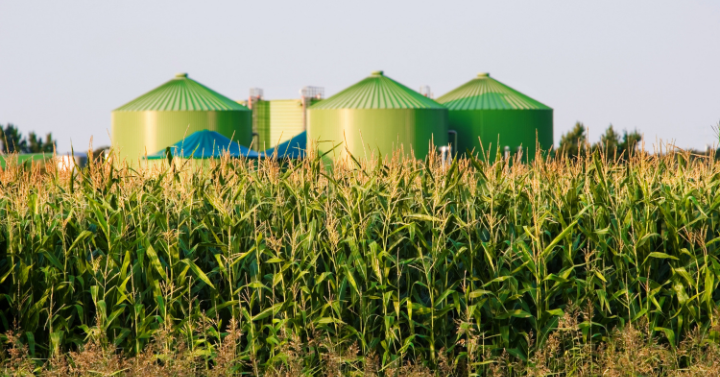In my role as Senior Consultant in the food industry, I have witnessed my fair share of innovation cycles, some fleeting, while others with the potential to truly alter the fundamentals of how we produce and experience food. Precision fermentation belongs firmly in the latter category. Over the past several years, what began as a niche application has steadily matured into a transformative platform technology with the capacity to redefine the entire ingredient categories.
At a time when the food sector is facing growing pressure to decarbonize, optimize supply chains, and diversify protein sources, precision fermentation offers both a compelling solution and a challenge: it reimagines not only the products we consume, but also the processes behind them.
What Is Precision Fermentation?
Precision fermentation is not a new concept. The pharmaceutical and enzyme industries have relied on it for decades. What’s new, however, is its application in mainstream food production. Using genetically programmed microorganisms, most often yeast, fungi, or bacteria, manufacturers can now produce specific, functional ingredients identical to those derived from animals or plants.
This approach is distinct from traditional fermentation or biomass fermentation. Unlike brewing beer or culturing yogurt, where the end product is the fermented mass itself, precision fermentation focuses on extracting a single molecule, be it a dairy protein, an egg white, or a specific enzyme/fat component crafted with pinpoint accuracy.
The implications are significant. We are no longer limited to sourcing these molecules from animals or crops. Instead, we can produce them on demand, in controlled environments, and with significantly lower environmental impact.
Most Promising Applications So Far
Several food applications are already seeing tangible outcomes from precision fermentation:
- Dairy proteins such as casein and whey are being produced without cows. These are not substitutes; they are chemically identical to their animal-derived counterparts, enabling the creation of milk, cheese, and yogurt with familiar sensory and functional profiles.
- Egg proteins such as ovalbumin, essential in baking and emulsification, are being recreated without hens, providing stability in supply and cleaner production.
- Lipids, including alternatives to palm oil or animal fats, can be tailored for improved performance, taste, and sustainability.
- Specialty enzymes and flavor compounds, long used in food processing, are being refined with greater precision and consistency.
Notably, these developments are not hypothetical. Perfect Day, Formo, Remilk, The EVERY Company, and Imagindairy, among other companies, have advanced from proof-of-concept to commercial production. Partnerships with major players such as Nestlé, Mars, and Danone further signal confidence in the long-term scalability of this technology.
Why the Food Industry Should Pay Attention
As someone advising both start-ups and legacy companies, I see precision fermentation not as a passing innovation, but as an enabling technology, one that will underpin ingredient systems for years to come.
Three characteristics make it particularly relevant:
- Functionality: These ingredients are not alternative in the usual sense. They behave identically to animal-derived equivalents, allowing for seamless integration into existing formulations.
- Sustainability: Compared to traditional agriculture, precision fermentation is vastly more efficient in terms of water, land use, and greenhouse gas emissions. In an era of climate constraints, this alone is a decisive advantage.
- Supply chain resilience: Fermentation facilities can be established in varied geographies, insulating production from climate variability, geopolitical instability, and disease outbreaks common in animal agriculture.
Challenges We Must Navigate
While the potential is considerable, precision fermentation also presents several challenges:
- Regulatory clarity remains inconsistent. In the United States, GRAS notifications have allowed relatively smooth entry. However, in the European Union and many parts of Asia, regulatory frameworks around novel foods remain slow-moving and fragmented.
- Consumer perception is another area that requires careful management. Transparency in labeling and education are key. Most consumers are open to technology when it’s framed around outcomes: cleaner ingredients, animal-free sourcing, and reduced environmental footprint. However, messaging must be handled with integrity.
- Cost and scale are gradually improving, but significant hurdles remain. Bioreactor infrastructure, downstream processing, and purification systems are capital-intensive. Public–private partnerships and co-manufacturing models may help bridge the current capacity gap.
What Has Surprised Me the Most
After observing this sector closely, what stands out to me is how quickly it converges with mainstream industry. Five years ago, precision fermentation was confined largely to academic institutions and early-stage biotech companies. Today, it is being integrated into the global food portfolio.
Equally surprising is the breadth of applications. While alternative dairy and eggs receive the most attention, we are now witnessing developments in fermented coffee and tea flavors, collagen, and even human milk oligosaccharides. This signals a much broader rethinking of food manufacturing.
Another underexplored advantage is localization. Precision fermentation allows for more distributed production systems. In the long term, this could enable countries with limited agricultural capacity to produce essential proteins and ingredients independently, increasing food sovereignty and reducing reliance on volatile import markets.
Where We Go From Here
For decision-makers in food production, retail, and ingredient supply, precision fermentation should now be considered a strategic priority. It will not replace all traditional ingredients, nor should it. But it will increasingly serve as the backbone for categories where performance, sustainability, and stability converge.
My advice to clients is clear: Engage early. Whether through pilot collaborations, portfolio diversification, or infrastructure investment, being part of the ecosystem today is far more advantageous than reacting later.
I see precision fermentation as one of the most promising and practical innovations of this decade. It is not only a response to environmental and ethical concerns, but a forward-looking tool that brings resilience and efficiency to a food system in flux.
Moreover, most importantly, it perhaps allows us to rethink what food can be, in terms of not only what we take out, but also what we are able to create, with greater control and responsibility than ever before.

